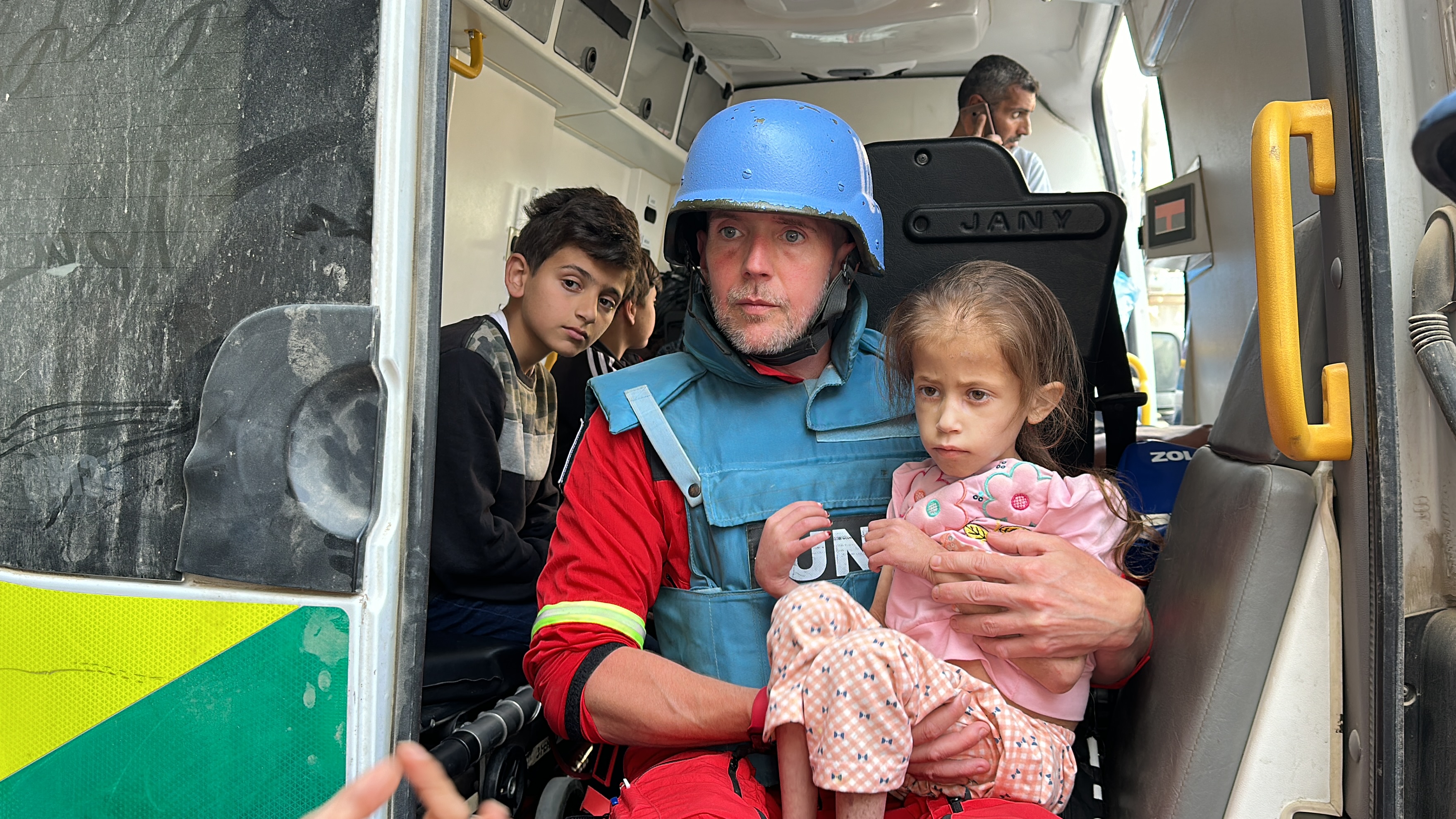
‘I am terrified of losing my daughter’
As people of Gaza face catastrophic hunger, WHO, with support from European Union, is ensuring that nutrition stabilization centers are equipped to treat cases of severe acute malnutrition.
GAZA, OCCUPIED PALESTINIAN TERRITORY, 19 APRIL 2024 -“My daughter is my life; she was like a flower. Now I can see her ribs and her spine. She can’t even sit, I have to carry her to the toilet,” says Nesma Ayyad, mother of seven-year-old Jana.
Nesma has been alone in Gaza since the war began in October. Her husband had left the Strip for medical treatment and was unable to return home as borders closed and the conflict worsened. With their family home destroyed during a bombing, she has struggled to provide for her four children and keep them safe.
Jana, whom she describes as an active young girl full of life, began suffering from stomach aches, diarrhea, and weight loss due to dire shortages of food and safe water. By February, her condition had deteriorated to the point where she was admitted to Kamal Adwan Hospital in north Gaza due to complications arising from dehydration and severe acute malnutrition.
"The doctor told me she needs nutritious food that I could not provide. I am terrified of losing my Jana,” says Nesma.
Jana’s story is tragically all too familiar. With famine looming, more than half of all Palestinians in Gaza – 1.1 million people – and are facing catastrophic hunger. Twenty-eight patients have reportedly died due to malnutrition, and many are fighting for their life.
Since the onset of hostilities, agricultural and agrifood production in Gaza has collapsed. Currently, about 81% of Gaza households lack access to clean and safe water, with internally displaced persons among the most affected.
Gaza has been reduced to rubble and urgently requires the revival of its local food production to help prevent famine and malnutrition – and this needs the entry of food production and agricultural inputs. With traditional food sources disrupted, humanitarian assistance has become the primary means of survival. To address the population's dire needs, an immediate humanitarian ceasefire, opening of all border crossings, and sustained aid access are crucial, along with the availability of basic goods from the private sector.
WHO, together with its partners, is racing against time to save lives.
Three WHO-supported nutrition stabilization centers are currently operational in hospitals and medical centers in Gaza - two in the south and one in the north of the Strip. With crucial support from the European Union, WHO has supplied these centers with medical supplies for the treatment of up to 1250 children with severe acute malnutrition. Additionally, WHO has trained health workers to identify and treat malnutrition with complications.
Jana’s condition is still critical. After receiving initial treatment at the nutrition stabilization center at Kamal Adwan, she has been transferred by WHO with assistance from CADUS, an international emergency team, to a field hospital in Rafah. She is currently awaiting approval for medical evacuation outside Gaza to continue her treatment.
"I am truly happy that she’s finally going to be able to receive treatment abroad. I hope that day comes soon, says Nesma. “I hope my child comes back healthy as she was before.”








